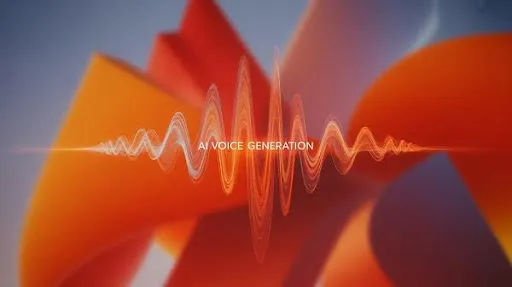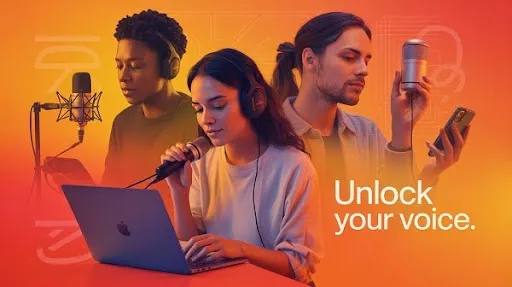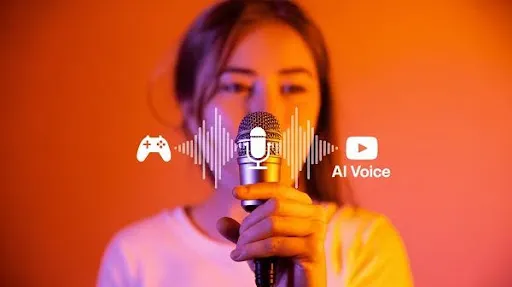Animation isn’t just a parade of moving images; the soul of any character is tucked inside its voice. A well-matched inflection gives a creature its backstory, color, and charisma. Once, that meant scouting the perfect actor, renting plush booths, and playing the scheduling tango under the clock and lights.
The process delivered, yet the ink ran costly, the clock ticked slowly, and artistry sometimes slipped through scheduling cracks.
AI voice generation has changed the game. Now you can sculpt a voice—grateful, scheming, or articulated by a never-heard-before tongue—within the afternoon. Each character gets a custom sonic skin, tailor-made for joyful glitches, ghostly whispers, or extraterrestrial trills. Animated projects with tight budgets and denser ideas suddenly have room to stretch.
Why Animators Are Using AI Voices
Endless Voice Options
One of the biggest perks of AI voice tools is variety. Want a voice that’s a grandparent, an eleven-year-old, or a creature that hasn’t been born yet, yet somehow smells is mint and motor oil?
Easy. Each tonal shard gets polished in real time, so story tests need never crash a scheduling tantrum. That means attitudes, subtleties, and sonic anthelopes can roam the edit suite without financing pain.
Saving Time and Money
Studio recording sessions are costly. Paying actors, booking space, and editing audio can eat up budgets fast. AI reduces both time and expense. Teams can spin out voice packs like apps—dump a few takes, trim syllables, vector to the temp animatic.
Indie studios, just-three-lattes studios, and solo dreamers can stack a whole cast without seating them in star booths or buying them gadgets. The expected barrier—bank large enough for big voice print—becomes a pop-up that says, “Try over here, no stretch fees, ongoing story in focus.”
Quick Fixes and Tweaks
Sometimes a single line needs adjusting. A human actor might require a new session to nail the right tone. AI allows instant changes. Need the line happier, calmer, or more dramatic? Just adjust the settings and try again. This flexibility keeps projects moving and reduces frustration.
Access for Independent Creators
For the fledgling storyteller, the tremble inside an epic room is no longer nerves over payments; it’s the tremble of navigating strange beasts, other wars, and overlooked stories. That’s where the real leap lives.
Drawbacks to Keep in Mind
Emotion Can Be Off
AI voices are getting better, but they sometimes lack subtle emotional nuance. Complex scenes with shifting feelings may feel flat if fully AI-generated. Human actors still bring that extra layer of expression that AI struggles to match.
Repetitive Sounding Voices
Some AI voices can become predictable. If you use the same voice repeatedly, it can feel a little artificial. Animators need to add small variations to keep characters sounding alive and distinct.
Legal Questions
AI often trains on existing voices. This brings up serious copyright risks, particularly if a synthetic voice is nearly identical to a living performer. Producers need to treat every AI voice sample as if it’s contractually sensitive, securing the right permissions to avoid legal backlash later.
Over-Dependence on Technology
Relying on machine voices can feel efficient, but total surrender risks sterile note-for-note reenactment. A living performer adds intuition, the ability to drift a beat, and the spontaneous charm that a trained neural net only imitates.
Popular AI Voice Tools in 2025
AI tools are everywhere, but a few stand out for 2D animation services and 3D animation services:
- Resemble AI – Lets you control tone, pitch, and emotion for realistic voices. Great for main characters.
- Murf.ai – Ideal for indie creators, offering multiple voices and accents.
- ElevenLabs – Creates natural, expressive speech with adjustable pacing.
- Voicery – Focuses on lifelike voices for storytelling or commercials.
- Play.ht – Customizable options, easy to integrate into animation projects.
Each tool has strengths, depending on the project. Some focus on realism, others on creative flexibility. Animators now pick tools based on voice style, ease of use, and the project’s budget.
Making AI Voices Work in Your Projects
AI voices work best when used smartly. Many animators start by generating draft lines. This lets them hear dialogue quickly, test timing, and adjust delivery before recording human actors.
Some creators mix AI voices with real voice work. For example, AI can handle minor or background characters while humans perform lead roles. This keeps production fast without losing emotional impact. Small adjustments, like changing speed or tone, make the difference between a “good enough” voice and one that truly fits the character.
Boosting Creativity With AI
AI gives animators more room to explore ideas. Want a character with a unique accent? Or a voice that changes with age during a story? It’s simple with AI.
A good example is an indie fantasy short. The team used AI for all background voices, giving each character a distinct sound. Lead characters were voiced by humans. The side-by-side proof is easy to measure: a bespoke library generated in hours that, once polished, felt layered and authentic at minimal cost.
Achieving that nuance the old way would have meant scheduling a dozen readings and burning record-room hours.
Common Mistakes to Avoid
Even the best AI voices can fall flat if misused. Keep these tips in mind:
- Adjust carefully – Play with pitch, tone, and speed to avoid robotic delivery.
- Mix human input – Let AI handle minor roles, but keep humans for key emotional scenes.
- Vary similar lines – Small changes in repeated phrases make characters feel alive.
- Follow copyright rules – Avoid using AI that mimics real actors without permission.
Following these steps keeps AI voices effective without compromising quality.
Real-World Examples
Several 2025 projects show how AI voices improve animation:
- Educational Series – AI voices gave minor characters diverse accents, making content accessible internationally.
- Indie Fantasy Shorts – AI voices handled dozens of background characters, letting a tiny team create a full world.
- Video Games – NPC dialogue was fully AI-generated, allowing developers to focus on gameplay and storytelling without audio delays.
The takeaway is clear—let the AI shoulder background work. It brings texture to a single performer’s role and frees camera folk and background artists to refine the soul of the piece, reallocating unglamorous clock ticks to first-draft creativity.
Looking Ahead
AI voice generation is improving fast. Soon, it may produce fully expressive voices that adjust automatically to scene context. Animators who combine AI efficiency with human emotional input will create the most engaging projects.
AI won’t replace actors entirely, but it will let creators take bigger risks, experiment more, and produce higher-quality content faster.
Final Word
The real leverage appears once the workflow adapts, converting voice work from scarcity to service. Files produce themselves at the click of a mouse, crisp audio that would have devoured a full day now generated over lunch-screen in the story room.
Balance is the principle to hold: machine to muscle, human to heart. If practical imagination pairs with human dialogue, the final track catches breath, texture, and the human pulse that the audience recognizes as true.
At Prolific Studio, one of the best animation studios in Hollywood, we help animators use AI voice tools to bring characters to life while maintaining depth and quality. Try AI voices on your next project and see how they can expand your creative possibilities today.
Frequently Asked Questions
Can AI voices fully replace human actors?
Not for main roles. AI works well for background characters, drafts, or minor lines. Human actors still excel at emotional depth.
Are AI-generated voices safe to use commercially?
Most AI tools come with licenses for commercial use. Avoid voices that mimic real actors without permission.
Can AI create voices in different accents or languages?
Yes. Modern tools can generate various accents, dialects, and even invented languages.
How do I make AI voices sound natural?
Small adjustments in tone, speed, and pauses help. Combine AI with human review for key scenes.
Which AI tool is best for 2025 animation?
It depends on needs. For realism, try Resemble AI or ElevenLabs. For indie-friendly options, Murf.ai and Play.ht are great.
Related articles:









